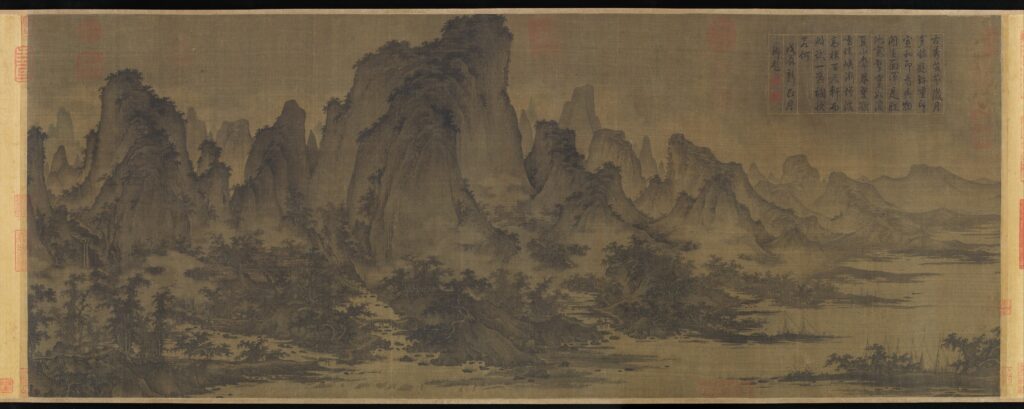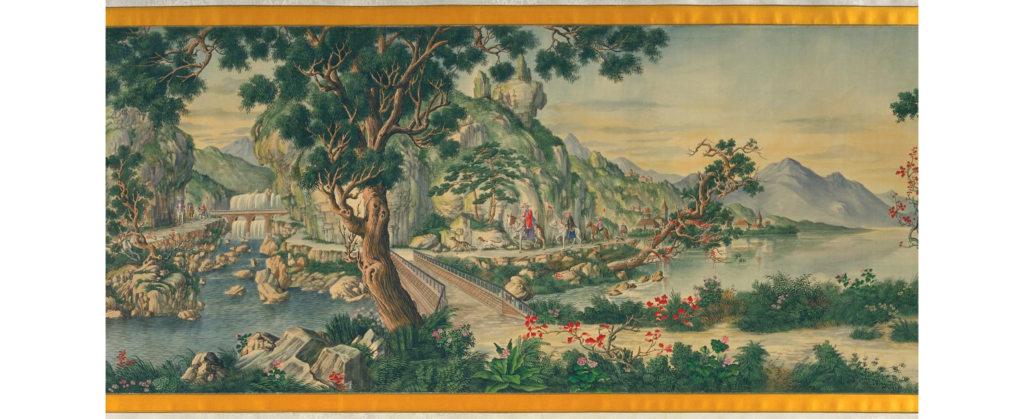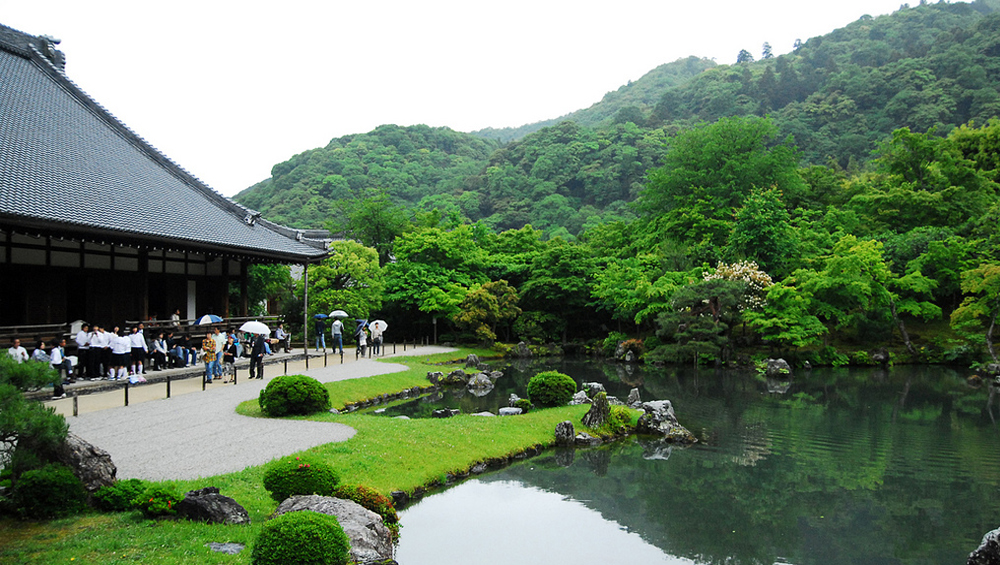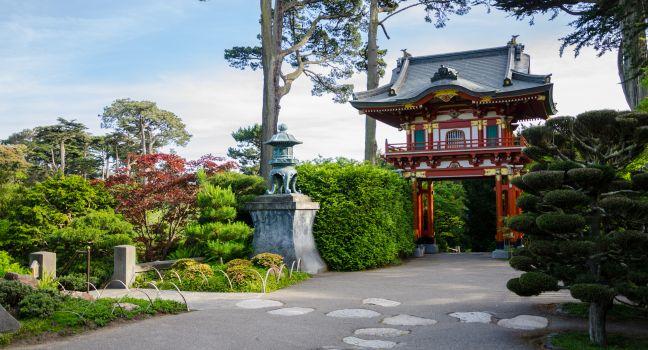Ismael Mora ’21
Nature transcends borders, cultures, and time making it an amazing thread to connect the exhibition as we will direct our attention to Chinese paintings and Japanese gardens. The first 3 Chinese Paintings we will be looking at are: Nymph of the Luo River attributed to Gu Kaizhi, Summer Mountains attributed to Qu Ding, and Beautiful Ladies Riding attributed to Giuseppe Castiglione. In the 4th century, Hsien Ho Six introduces the six principles of painting and we will be using the following three principles to create a visual analysis: spirit resonance, bone method, Division and planning. Each principle provides an important analysis of paintings, but for this exhibition, we are concerned with principles that best relate to the rendering of nature. It’s important to note the limitation of the translation as Ho wrote each principle with only four characters and render various connotations that are difficult for the English language to encompasses. Spirit resonance focuses on capturing the visual representation of the complexities of universal dynamism (Matthew Turner, 2009, p. 111). We must be casuist to narrow ourselves to this definition as Turner explains this manifests itself differently through various religious perspectives. The bone method refers to the Division and Planning is more straightforward, concerned with how the painting is composed and spaced. These three Chinese paintings show the significance of the representation of nature through various cultures and time, as they are all copies and continue to house space in the cultural landscape of Chinese paintings.
As we shift our attention to the next section, Japanese gardens, we are shifting our understanding of nature from representation to the physical balance of nature, aesthetics, and function. The two Japanese Gardens we will be looking at are the Sōgenchi Garden of Tenryu Ji in Arashiyama, Kyoto, and the Japanese Tea Garden in San Francisco, California. Although the Japanese Tea Garden in San Francisco was built 500 years later and 5,000 miles away from Japan, the typography of the Golden Gate Park allowed to continue many Japanese aesthetic elements. Some elements that still preserved are rock gardens, asymmetry, pagodas, bridges, and koi fish. However, what does set the Sōgenchi Garden apart is its usage of shakkei, borrowed scenery, to work the extend the landscape beyond the garden (Watanabe, 2012, p. 347). It’s also important to note the presence of the Japanese Tea Garden in San Francisco is rooted in Asian exoticism, which has plagued the west and later established through the world and international exhibitions. We must not only think of how nature is situated with architecture, but also the nature of the how and why gardens are established.
As we traverse through the three Chinese paintings and the two Japanese gardens, we will use nature as a framework to helps us guide our observation. Some questions that we can keep in mind when looking at them collectively are: what is repeated? What is unique to each? What does it remind us of? What is the purpose of it? Lastly, does its meaning/function change over time? When we look at different forms of art and cultures through a common lens, we are able to not only notice relationships but what makes them unique.
Bibliography:
Turner, Matthew. “Classical Chinese Landscape Painting and the Aesthetic Appreciation of Nature.” The Journal of Aesthetic Education, vol. 43, no. 1, 2009, pp. 106–121. JSTOR, www.jstor.org/stable/40263708. Accessed 23 Mar. 2021.
Watanabe, Toshio. “The Modern Japanese Garden.” Since Meiji: Perspectives on the Japanese Visual Arts, 1868-2000, edited by J. Thomas Rimer, by Toshiko McCallum, University of Hawai’i Press, Honolulu, 2012, pp. 340–360. JSTOR, www.jstor.org/stable/j.ctt6wqh84.19. Accessed 23 Mar. 2021.
https://asia.si.edu/object/S1991.46/
https://asia.si.edu/object/F1914.53/
https://www.metmuseum.org/art/collection/search/39915




